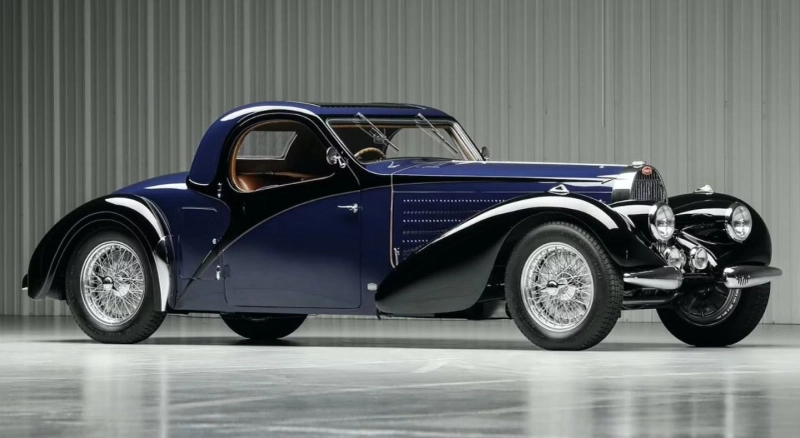The 20th century marked an era of revolutionary change in the automotive world, with a surge of innovative designs, powerful engines, and cultural shifts. Many of these cars have not only defined the era but have also become symbols of timeless craftsmanship and performance. From muscle cars to luxury sedans, the iconic classic cars of the 20th century continue to captivate car enthusiasts worldwide.
These vehicles represent more than just a mode of transportation—they symbolize a shift in culture, technology, and style.
Let’s take a journey through some of the most iconic classic cars of the 20th century and explore why they remain so influential today.
1. Ford Mustang (1964)
When Ford unleashed the Mustang in 1964, it revolutionized the automobile industry. Known for its sleek design, powerful V8 engine, and affordable price tag, the Mustang became the face of the American muscle car. Its success led to an entire new genre of cars, giving rise to the pony car segment.
- Cultural Impact: The Mustang quickly became synonymous with the rebellious spirit of the 1960s, making appearances in countless films and music videos.
- Design Legacy: The Mustang’s long hood, short rear deck, and bold front grille became iconic features that still influence car design today.
- Performance: The powerful V8 engine options made the Mustang a symbol of American performance.
The Mustang’s influence on car culture is undeniable, and its legacy continues to live on, with modern iterations of the vehicle still honoring its classic design.
2. Chevrolet Corvette (1953)
The Chevrolet Corvette, introduced in 1953, is often hailed as America's sports car. With its stylish, fiberglass body and cutting-edge design, the Corvette redefined the idea of a high-performance roadster. The Corvette offered a perfect balance of speed, elegance, and practicality, making it an icon of American automotive engineering.
- Timeless Design: The Corvette’s sleek curves and aggressive front end have made it one of the most recognizable sports cars in the world.
- Engineering Innovation: With advanced technology for its time, the Corvette featured powerful engines and impressive handling.
- Performance Excellence: With a focus on speed and agility, the Corvette quickly became a symbol of American muscle and road performance.
The Corvette's continuous production, even into the 21st century, is a testament to its enduring popularity and legacy in the automotive world.
3. Porsche 911 (1964)
The Porsche 911 has stood the test of time as one of the most iconic sports cars ever made. Introduced in 1964, the 911 was designed to be a high-performance car with precision handling. Its unique design, with the engine in the rear, set it apart from other sports cars and contributed to its success in racing.
- Unique Design: The Porsche 911’s distinctive round headlights, sloping roofline, and rear engine placement became the hallmark of the brand.
- Racing Heritage: The 911 has a deep connection to motorsport, making it one of the most successful racing cars of all time.
- Enduring Popularity: With continuous updates, the 911 remains a top-tier sports car, known for its handling and performance.
The Porsche 911 is often regarded as the ultimate sports car, and its legacy is still a driving force in the car industry.
4. Pontiac GTO (1964)
The Pontiac GTO, often credited with igniting the muscle car movement, was first introduced in 1964. It featured a big-block V8 engine and a bold, aggressive design that captured the spirit of the American muscle car. Its success made the GTO a household name and is still a point of nostalgia for many car enthusiasts today.
- Power and Performance: The GTO’s 389-cubic inch V8 engine made it a true powerhouse, capable of delivering impressive speed and acceleration.
- Cultural Icon: With its aggressive styling and raw power, the GTO became a symbol of freedom and rebellion in the 1960s.
- Influence on the Muscle Car Genre: The GTO set the stage for other high-performance cars, like the Chevy Camaro and Dodge Charger.
The Pontiac GTO’s impact on automotive history is undeniable, but the brand’s future remains uncertain. The question many enthusiasts are asking is, is pontiac coming back? While there have been no official announcements, the resurgence of interest in classic muscle cars might prompt brands like Pontiac to reconsider their legacy.
5. Jaguar E-Type (1961)
Regarded as one of the most beautiful cars ever made, the Jaguar E-Type is a true icon of 20th-century automotive design. With its curvaceous body, elegant lines, and powerful six-cylinder engine, the E-Type embodied the glamour and sophistication of the 1960s. It is often cited as the car that made people fall in love with British automotive craftsmanship.
- Design Excellence: The E-Type’s aerodynamic design and sweeping curves made it an instant classic, still admired by car enthusiasts worldwide.
- Performance: With a top speed of over 150 mph, the E-Type combined luxury with performance, making it an ideal blend of beauty and speed.
- Enduring Popularity: Jaguar continues to celebrate the E-Type’s legacy, with restorations and reboots of the car.
The Jaguar E-Type’s influence on sports car design is immeasurable, and it remains a highly sought-after collectible.
6. Mercedes-Benz 300SL (1954)
The Mercedes-Benz 300SL, often referred to as the “Gullwing,” is one of the most iconic cars of the 20th century. With its distinctive gullwing doors, the 300SL was ahead of its time, featuring a lightweight aluminum body and a fuel-injected engine. The car quickly became a symbol of luxury, performance, and innovation.
- Innovative Design: The 300SL’s unique gullwing doors became one of the most recognizable features in automotive history.
- High Performance: The 300SL’s 3.0-liter engine made it one of the fastest cars of its era, with a top speed of 160 mph.
- Cultural Significance: The 300SL became a status symbol, showcasing the power of Mercedes-Benz in the luxury sports car market.
The 300SL's design and performance remain a benchmark for future Mercedes models and luxury sports cars in general.
Conclusion
The classic cars of the 20th century represent more than just machines—they are symbols of a transformative era in automotive history. These cars, from the Ford Mustang to the Jaguar E-Type, have shaped the industry and influenced generations of car enthusiasts. They continue to inspire and captivate, offering a glimpse into a time when performance, style, and innovation were at the forefront of automotive design.



